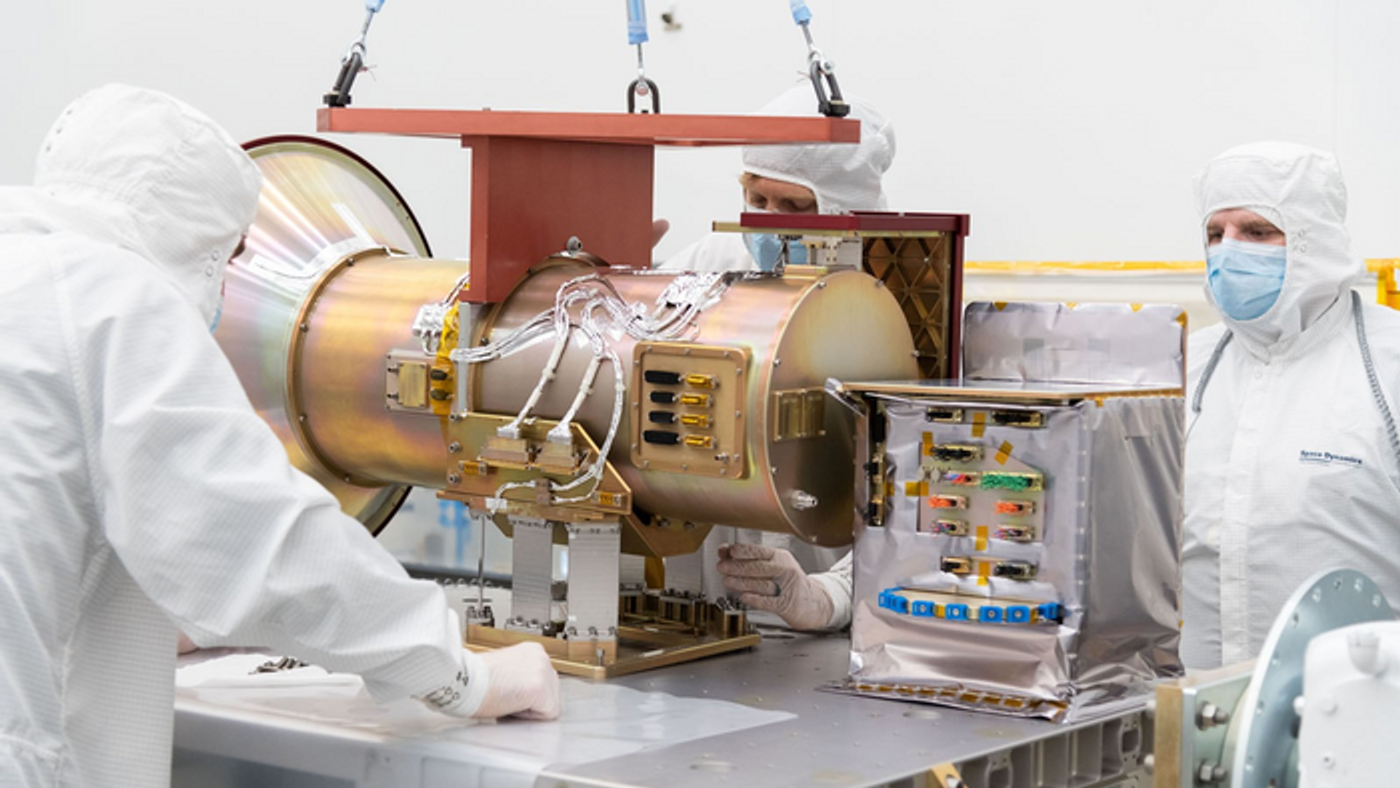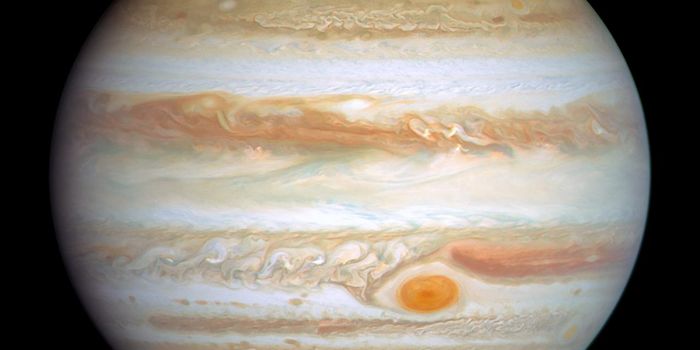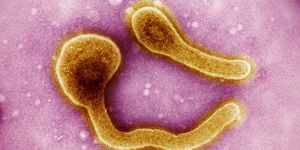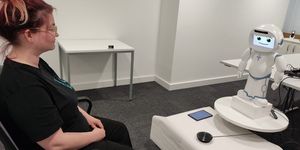Utah State University Space Experiment to Launch to ISS in December 2023
Utah State University (USU) will be launching their Space Dynamics Laboratory (SDL) and College of Science-led Atmospheric Waves Experiment (AWE) to the International Space Station (ISS) this December, per a recent announcement from NASA. The purpose of AWE will be to study atmospheric gravity waves and space weather, specifically pertaining to how gravity waves within the mesopause, the upper boundary of Earth’s mesosphere, transport energy waves, which affect space weather.
The AWE Opto-Mechanical Assembly (OMA) being mounted to the flight EXPRESS Payload Adapter (ExPA) at SDL facilities on Utah State University's Innovation Campus by Space Dynamics Laboratory Engineer and Scientist Brian Thompson (left), Engineering Associate Dave Griffin (center), and Mission Assurance Manager Russ Kirkham (right). (Credit: SDL/Allison Bills)
Atmospheric gravity waves are formed from weather on Earth and can affect space weather. Understanding both is crucial to both space exploration and Earth since they both can affect communication satellites vital to everyday activity on Earth, as well as human spaceflight, as space weather can cause harm to astronauts in space if they are exposed to too much of it.
“The mesopause is our porthole to space weather, through which Earth’s atmospheric gravity waves that affect space weather must pass,” said Dr. Michael Taylor, who is the AWE Principal Investigator, and a professor in USU’s Department of Physics. “From Earth, as in space, we can sometimes see this region of the atmosphere when it produces colorful bands of light known as airglow. Scientists have been studying atmospheric gravity waves from the ground for decades. AWE will allow for observations from space for the first time and provide us with new information about interactions between the waves and space weather.”
The entire AWE project is being managed by USU’s Space Dynamic Laboratory, including safety and mission assurance, on-orbit operations, science instrument manufacturing, and systems engineering. While USU has been conducting space research for almost 70 years, the AWE mission marks the first time USU is developing and operating an entire mission for NASA.
“Following a rigorous calibration and test campaign to ensure that the science instrument is flight ready, SDL is making preparations for AWE’s safe storage until it is shipped to Cape Canaveral,” said Burt Lamborn, who is the SDL AWE project manager. “SDL is looking forward to the December launch of AWE, but our work will not be finished. We are honored to work with NASA’s Heliophysics team and Dr. Taylor as SDL leads mission operations once the instrument is launched and integrated onto the ISS.”
What new insights will AWE provide scientists, and the world, about atmospheric gravity waves and space weather? We’ll find out soon enough, and this is why we science!
Sources: NASA, Utah State Today
As always, keep doing science & keep looking up!









